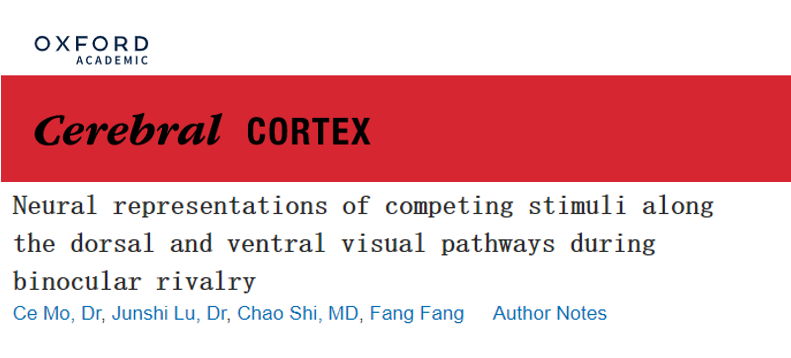Prof. Fang Fang: Neural representations of competing stimuli along the dorsal and ventral visual pathways during binocular rivalry

Abstract
Binocular rivalry arises when two discrepant stimuli are simultaneously presented to different eyes, during which observers consciously experience vivid perceptual alternations without physical changes in visual inputs. Neural dynamics tracking such perceptual alternations have been identified at both early and late visual areas, leading to the fundamental debate concerning the primary neural substrate underlying binocular rivalry. One promising hypothesis that might reconcile these seemingly paradoxical findings is a gradual shift from interocular competition between monocular neurons to pattern competition among binocular neurons. Here, we examined this hypothesis by investigating how neural representations of rivalrous stimuli evolved along the visual pathway. We found that representations of the dominant and the suppressed stimuli initially co-existed in V1, which were enhanced and attenuated respectively in extrastriate visual areas. Notably, neural activity in V4 was dictated by the representation of the dominant stimulus, while the representation of the suppressed stimulus was only partially inhibited in dorsal areas V3A and MT+. Our findings revealed a progressive transition from the co-existing representations of the rivalrous inputs to the dictatorial representation of the dominant stimulus in the ventral pathway, and advocated different cortical evolutionary patterns of visual representations between the dorsal and the ventral pathways.
Original link: https://doi.org/10.1093/cercor/bhac238